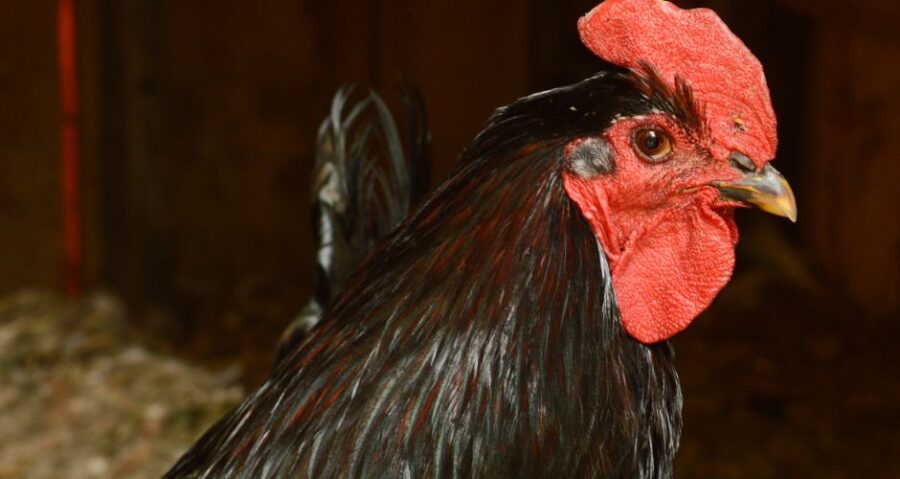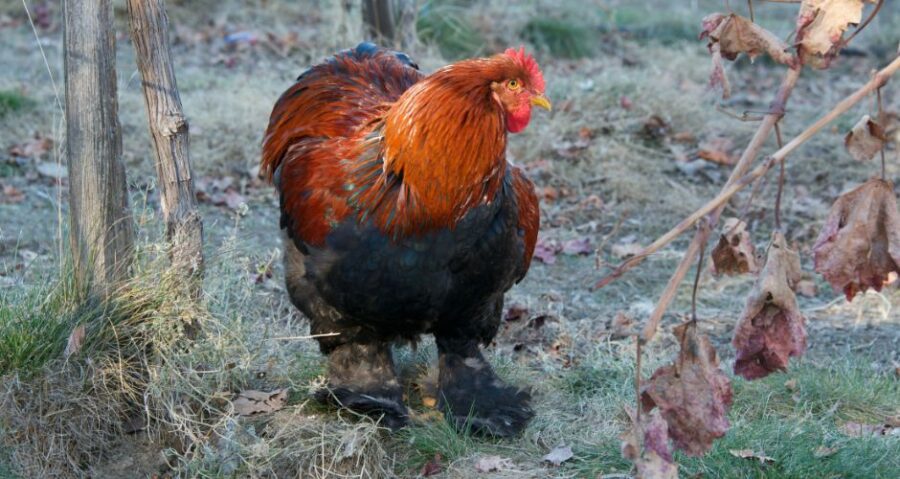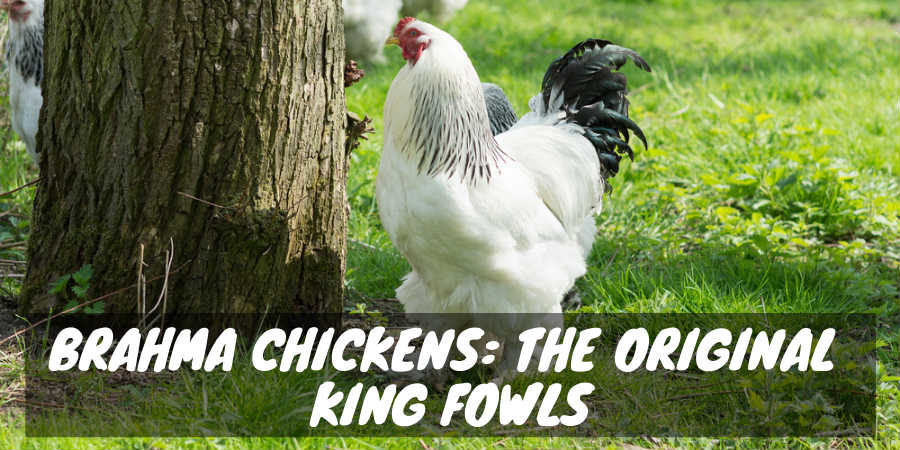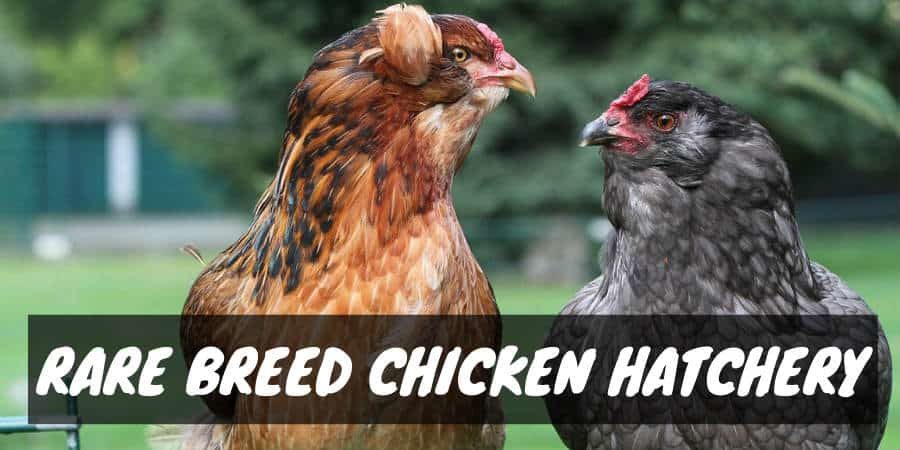
These hens seem to be all the rage in the backyard farming community as chicken tenders everywhere flock to gather a colourful bounty of chickens that lay the rainbow (check out more on What Colour Do Chickens Lay?).
Black Copper Maran: History
The Black Copper Maran is a recognized colouring of the recent classic Maran chicken originally bred and recognized in France.
Rumour has it that the original Maran chickens were bred in Marans France as an intermingling of the wild and feral chickens descending from Indonesian cock fighting chickens and the Croad Langshans from China.
These recombined chickens were originally known as poule du pays or ‘local chicken’ in the marshy regions of France and became a regcognized breed in 1914.
With their ancestry in game fighting chickens and their indiscriminate breeding with Croad Langshan, Brahmas, Coucou de Malines, Coucou de Rennes, and Gatinaise all aimed at creating a stunning bird that laid consistent and quality dark brown eggs, the breed was subject to wide variations in their plumage and colouring.
It wasn’t until 1921 when a Mrs. Rousseau decided to unify the breed in appearance, not only egg colour.
And thus, the beautiful and tell tale breed of Maran was born.
While Marans come in a variety of colours, the one that has garnered the most attention in recent years is the Black Copper Maran.
Neat Fact: Black Copper Marans are said to be the favourite of James Bond. So, if you’re truly a super fan you simply must add some to your flock.
Appearance Standard
Black Copper Marans are a terrific dual-purpose breed and an excellent breed if you are looking for a “livestock guardian” chicken, the Black Copper Maran rooster is a top contender.
Black Copper Marans are strong and hearty birds, when viewed from the side their profile should resemble a “V”, with broad shoulders and slender legs, these majestic birds command respect.
Black Copper Marans have a show stopping black plumage that is iridescent green in the sunlight. These birds shine like an emerald when the light hits them just right.
Both male and female Black Copper Marans have striking copper hackle (neck) feathers that cascade, intermingled, down to their bellies.
Roosters extend the copper plumage into their saddle feathers which drape handsomely over their backs.
Once you know how to spot their splendour, it becomes hard to miss in a quality backyard flock and can quickly become the subject of conversation amongst chicken enthusiasts.

Generally, Black Copper Marans are clean-legged though, with the ancestry of breed combinations, it is not uncommon to hatch a clutch with pantaloons fit to compliment their fiery feathers.
According to the American Poultry Association, which recognized the breed in 2011, Black Copper Marans possess red comb, waddles, and earlobes with orange eyes and distinct slate or pink legs.
Interesting tidbit: While feathered feet are recognized and accepted in France, the American Poultry Association deems any feathering on the legs a disqualification for a show chicken.
Black Copper Marans are excellent dual-purpose breeds with males weighing in around 7-8lb, with hens tipping the scales around 6.5lb.
There are bantam Marans, but they are far and few between.
Disposition
Although there are many backyard chicken tenders who are looking for show quality poultry, the majority of us are looking for loveable and friendly fowl that will not only feed us but entertain our quirky desire to snuggle chickens.
If you indeed read the history of the breed, it should come as little surprise that the roosters, having descended from game fighting stock, have been known to be aggressive.
While this is an excellent trait in a protector of the flock, it is a little less desirable for the standard backyard chicken tender.
Now, like every animal and breed, it is not always the case that the roosters will be aggressive, and there are ways to mitigate the risk. For example:
- Avoid having more than one rooster (especially with a small flock)
- Handle your rooster constantly
- Never let them see you sweat
Hens, on the other hand, tend to be sweet and docile, though not overly cuddly.
Housing
Black Copper Marans are a great bird for the free range farm. These black and copper beauties love foraging and make for exceptional pest control on the homestead.
Though they prefer the open fields, Black Copper Marans also temper captivity well and thus can manage contently in an adequate chicken run.
Given their fluffy and thick plumage, Black Copper Marans are considered reasonably cold hardy and fair well in the northern climates.
Some risks to consider in a colder climate, given their tendency for striking combs and waddles, the risk of frostbite – especially for roosters – can be extremely high.
Ensuring adequate ventilation and reducing moisture in the winter months will help mitigate the risk of frostbite.
Eggs

There is just something that hits different when you have a bounty of beautifully coloured eggs on the counter waiting to be devoured and enjoyed.
Black Copper Marans are highly sought after when it comes to what they bring to the table, pun intended.
While all Maran chicken lay deep brown eggs, Black Copper Marans take the cake for the richness and boldness of colouring.
Truly, a chocolate egg.
Interesting fact, the pigment in the egg development process for Maran chickens is similar to that of printer ink. A hen only has so much colour to offer and as a hen ages, the colour and depth of her eggs diminishes.
The Black Copper Maran can literally run out of ink.
This is more prevalent later in the laying season and with hens that lay more frequently.
On average, one can expect 3 eggs per week from their Black Copper Maran hen, roughly 150-200 eggs annually.
Summary: Is the Black Copper Maran Right For You?
If you’re hoping for a consistent layer, the Black Copper Maran will let you down. While they typically lay a few times a week, these ladies are not exactly notorious for their quantity of output.
But, if you are in the market for a show-stopping hen who lays rich and conversation worthy eggs, this is your gal!




